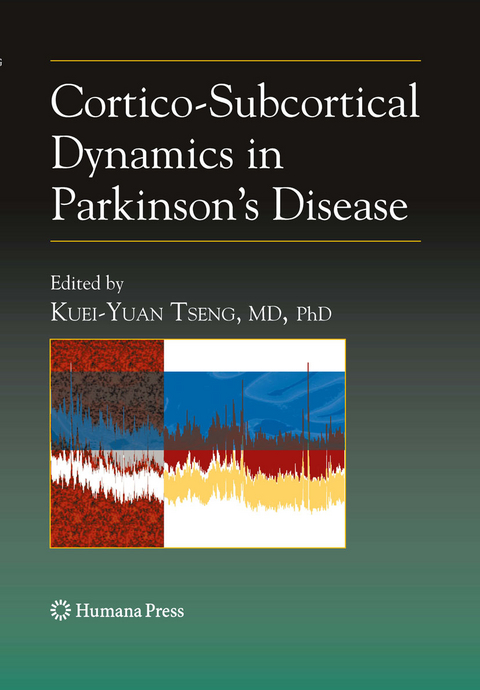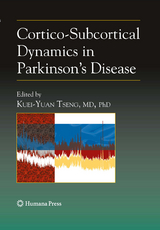Cortico-Subcortical Dynamics in Parkinson’s Disease
Humana Press Inc. (Verlag)
978-1-60327-251-3 (ISBN)
- Lieferbar (Termin unbekannt)
- Versandkostenfrei
- Auch auf Rechnung
- Artikel merken
Cortico-Subcortical Circuits and Parkinson’s Disease.- Leading Toward a Unified Cortico-basal Ganglia Functional Model.- Modeling Parkinson’s Disease: 50 Years Later.- Physiological Studies of the Cortico-subcortical Dynamics and Parkinson’s Disease.- Phasic Dopaminergic Signaling: Implications for Parkinson’s Disease.- Striatal Dendritic Adaptations in Parkinson’s Disease Models.- Diversity of Up-State Voltage Transitions During Different Network States.- The Corticostriatal Pathway in Parkinson’s Disease.- Cholinergic Interneuron and Parkinsonism.- Basal Ganglia Network Synchronization in Animal Models of Parkinson’s Disease.- Converging into a Unified Model of Parkinson’s Disease Pathophysiology.- The Corticostriatal Transmission in Parkinsonian Animals: In Vivo Studies.- Striatal Nitric Oxide–cGMP Signaling in an Animal Model of Parkinson’s Disease.- Dopamine–Endocannabinoid Interactions in Parkinson’s Disease.- Glutamate Plasticity in an Animal Model of Parkinson’s Disease.- Computational Analyses of the Cortico-Subcortical Dynamics and Parkinson’s Disease.- Neuromodulation and Neurodynamics of Striatal Inhibitory Networks: Implications for Parkinson’s Disease.- Dopaminergic Modulation of Corticostriatal Interactions and Implications for Parkinson’s Disease.- Neurobiology and Pathophysiology of Parkinson's Disease.- Pathogenesis of Oxidative Stress and the Destructive Cycle in the Substantia Nigra in Parkinson’s Disease.- Regulation of G-Protein-Coupled Receptor (GPCR) Trafficking in the Striatum in Parkinson’s Disease.- Atypical Parkinsonism in the French West Indies: The Plant Toxin Annonacin as a Potential Etiological Factor.- Cognitive Deficits in Parkinson’s Disease.- Pharmacological and Non-Pharmacological Treatments inParkinson’s Disease.- Dopamine Replacement Therapy in Parkinson’s Disease: Past, Present and Future.- Molecular, Cellular and Electrophysiological Changes Triggered by High-Frequency Stimulation of the Subthalamic Nucleus in Animal Models of Parkinson’s Disease.- Surgical Strategies for Parkinson’s Disease Based on Animal Model Data: GPi and STN Inactivation on Various Aspects of Behavior (Motor, Cognitive and Motivational Processes).- Antidromic Cortical Activity as the Source of Therapeutic Actions of Deep Brain Stimulation.- Cell-Based Replacement Therapies for Parkinson’s Disease.
| Reihe/Serie | Contemporary Neuroscience |
|---|---|
| Zusatzinfo | 76 Illustrations, black and white; X, 316 p. 76 illus. |
| Verlagsort | Totowa, NJ |
| Sprache | englisch |
| Maße | 155 x 235 mm |
| Themenwelt | Medizin / Pharmazie ► Medizinische Fachgebiete ► Neurologie |
| Medizin / Pharmazie ► Studium | |
| ISBN-10 | 1-60327-251-8 / 1603272518 |
| ISBN-13 | 978-1-60327-251-3 / 9781603272513 |
| Zustand | Neuware |
| Haben Sie eine Frage zum Produkt? |
aus dem Bereich




